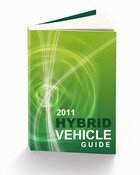What Is A Hybrid Car? A Basic Overview of Hybrids

What’s Going On In There?
There are many ways hybrid cars are different from standard vehicles. There’s emissions, fuel consumption, cost and, of course, the mechanics of it all. The main difference between the two is that a hybrid car uses electricity combined with gasoline and a standard vehicle uses only gasoline.
In a gas-powered car, fuel runs the engine, which turns the transmission, which then rotates the wheels and propels the car forward. These standard cars create more pollution and further our dependence on oil. With prices at the pump rising every week, these cars represent not only a less than eco-friendly mode of transport, but also a big bite out of your wallet.
On the opposite end of the spectrum, are electric cars which use batteries to power the engine and turn the transmission and wheels. Electric cars have not been seen as feasible for the mainstream market because of two main factors: cost and performance. Existing batteries can not run for very long before they exhaust themselves and must be replaced. Additionally, the cost of production on these batteries is very high.
In the middle, are hybrid cars. They use a combination of fuel and batteries to run the vehicle. A gas-fueled engine powers a generator that is used to either charge electric batteries or power an electric motor that then spins the transmission and wheels. When possible, the batteries are used to charge the electric motor, instead of the generator. These power sources switch as a car faces different driving conditions and you, the driver, get the best of both worlds.
For the true nuts and bolts (along with a diagram or a hybrid car/system), howstuffworks.com is always a great place to start! Other resources include What Is A Hybrid Car, How Hybrid Cars Work, and the History of Hybrids.
So what makes a hybrid so efficient?
The fact that gas is not directly powering the car. Since a gas-fueled engine is powering a generator (and not turning the transmission – a much larger job), it can be much smaller and lighter, which results in less of a load for the car to work to carry. Having the flexibility to run the motor on batteries or generator power also cuts down on the total amount of fuel used.
What’s next?
The future of hybrid cars has endless possibilities. One trend would be to create a car that ran on electric batteries (charged by plugging the car in, hence the name “plug-in hybrids”) until they were exhausted and then move to fuel. This would use less fuel because some of the battery power would come from the grid, as opposed to a gas powered generator.




















Pingback by Pros & Cons of Hybrid Cars | Advantages & Benefits on 9 May 2008:
[…] It’s a fact that most hybrids use less gas than standard cars (see our previous article on How Hybrids Work to learn how they do it). For every mile you drive and each gallon of gas you burn, your […]